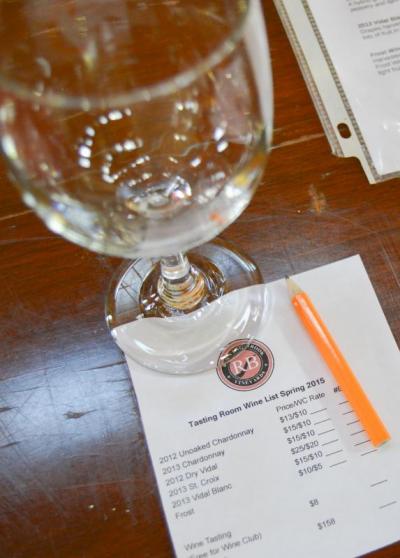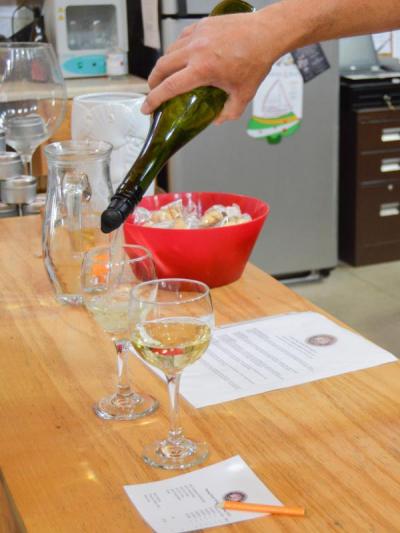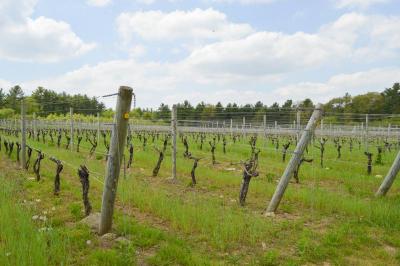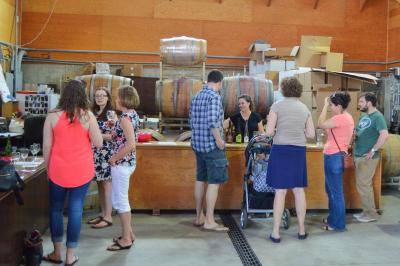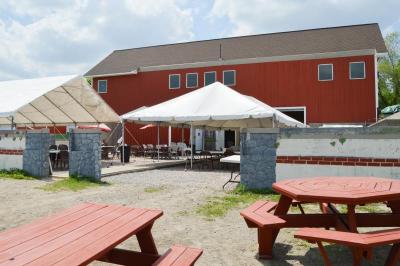Running Brook Vineyards serves wine without the snobbery
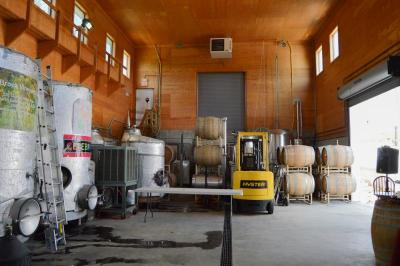
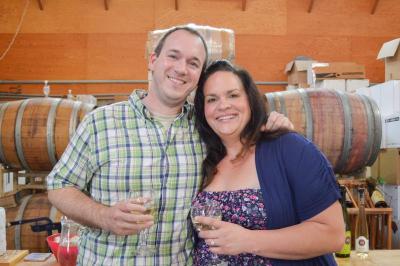
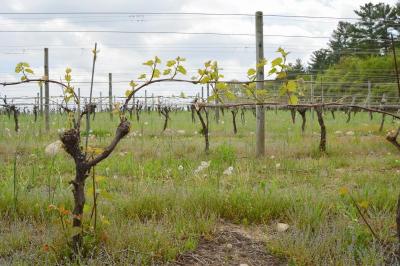
Referred to as a “black sheep” by its customers, Running Brook Vineyards & Winery gladly accepts their reputation as an oddity in the industry.
“They’re not the stuffy crowd, the wine snob crowd. This is the regular Joe place where you want to go and enjoy wine,” said Jesse Reid of Tiverton, who was sampling wine with his fiancee, Jennifer Manchester.
Manager Terry Cripps believes the laid back atmosphere of the winery is paramount to its success. They offer tastings and glasses of wine at an L-shaped bar tucked in the corner of the large, open room where they produce their products.
“When you come here you’re not coming into a tasting room. You’re trying wines in a winery next to tanks and barrels filled with wine that you’re going to be trying next year,” said Cripps.
The outdoor entryway leading to this main room is lined with plastic tables and fold-out chairs tucked beneath canopies. People use the space to drink wine, order pizza and hang out.
“We’ve completed the whole wine trail,” said Reid. “This is the place you want to come back to.”
The winery started in 2000 by Pedro Teixeira, a dentist based in Pawtucket, Rhode Island. He founded Running Brook with one of his patients, Manuel Morais, who retired three months ago.
Originally, wine was produced off-site until 2005 when they acquired their own bottling equipment.
Behind the main facility are sprawling fields of grape vines. There are currently 8 acres out back, four of which are for Vidal Blanc. Next year, they plan to install another 5 acres for Merlot and Pinot Noir. The vineyard also has 14 acres in Westport.
The vines grow on a network of wires pulled tight and suspended by wooden posts. The fence requires precision and needs to be perfectly straight to enable the fruit to receive the right amount of sunlight.
Rows are 800-feet long with about 155 vines per row. On a warm day, the vines can grow up to a quarter inch. The fruit is at its best in years where there are periods of heavy rain followed by dry spells.
“Mother nature lets us know how much we’re going to produce every year,” said Cripps. “Mother nature has way more to do with wine making than any wine maker does. It depends on the weather.”
The harvest runs from October to November. Between planting, pruning and maintenance, Cripps estimates that the only month they aren’t working in the field is December.
He described the harvest as a peaceful experience, listening to the sounds of birds and the clipping of shears. The grapes are harvested exclusively by hand.
“If I was doing a row by myself, it would be about an hour, hour and a half,” Cripps said of the Vidal Blanc, a high-yield variety.
During his early twenties, Cripps had been stationed in the military about 30 miles away from Napa Valley. He said back then, wine tastings were free. The experience of visiting the Californian wine bars sparked his interest in wine.
“The first week after I got out of the military, I started in the dish room. A year later, I was banquet captain. Wine was a big thing to bump up your ticket prices, so I started learning about it,” said Cripps.
He said he loves how everyone will get a different experience out of every bottle. It’s for that reason, he strongly recommends paying attention to your own tastes.
“The biggest mistake people make with wine is listening to other people. They might say, ‘This is a great wine!’ But if you didn’t like it, it was a great wine for him or her, not you. It depends what you like. Don’t listen to other people,” said Cripps.
With up to nine different wines throughout the year, Cripps wants his customers to find what’s right for them — without the pressure.
“We’re not going to push you out," said Cripps. “Some wineries, when they’re built around tourists, that’s valuable space that’s taken. We’re not about that. We want you to come in and have a good time.”




